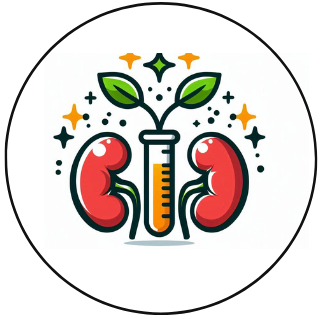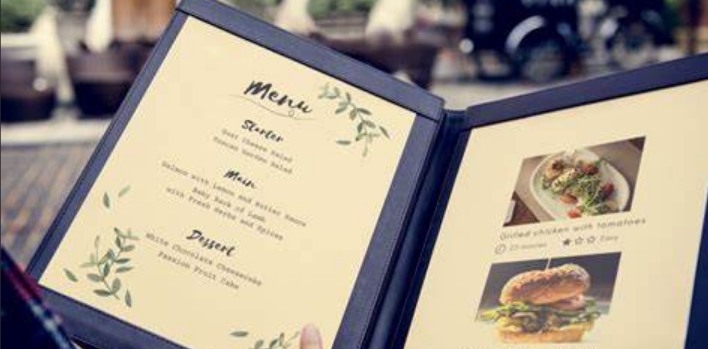The Challenges of Eating Out with Kidney Disease: Tips and Strategies for Navigating Restaurant Menus
Eating out can be a fun and social experience, but for people with kidney disease, it can also be challenging. From hidden sodium to unexpected phosphorus additives, dining out can present numerous obstacles when trying to stick to a kidney-friendly diet. In this blog post, we’ll explore the challenges of eating out with kidney disease and share practical strategies to help you make healthier choices. We’ll also provide suggestions for products that can make dining out easier and more enjoyable.
The Challenges of Eating Out with Kidney Disease
When managing kidney disease, your diet plays a crucial role in keeping your kidneys healthy. Here are some common challenges that people with kidney disease face when dining out:
1. High Sodium Levels
One of the biggest challenges when eating out is the high sodium content in many restaurant dishes. Sodium is used to enhance flavor and as a preservative, making it hard to avoid, even in seemingly healthy meals like salads and soups. Excessive sodium intake can lead to fluid retention and high blood pressure, putting additional strain on the kidneys.
2. Hidden Phosphorus and Potassium
Many restaurant dishes contain phosphorus additives and high levels of potassium. Processed and fast foods often use phosphorus-based preservatives, which can be detrimental to people with kidney disease. Potassium-rich foods, such as certain vegetables and fruits, can also be challenging to track and control.
3. Limited Control Over Ingredients
When you cook at home, you have full control over the ingredients you use. However, eating out means you have to rely on the restaurant’s preparation methods, which can include ingredients that aren’t kidney-friendly. Sauces, dressings, and seasonings can be a hidden source of sodium, phosphorus, and potassium.
4. Portion Sizes
Restaurant portions are often larger than necessary, leading to overeating, which can negatively affect your health. Managing portion sizes is essential for keeping nutrients in check, but it can be difficult to gauge when dining out.
Strategies for Eating Out with Kidney Disease
Although eating out can be challenging for individuals with kidney disease, it is possible to enjoy a meal at a restaurant while sticking to a kidney-friendly diet. Here are some practical tips and strategies:
1. Plan Ahead
One of the best ways to manage eating out is to plan ahead. Look up the restaurant’s menu online and identify kidney-friendly options before you arrive. Many restaurants offer nutritional information, which can help you choose dishes with lower sodium, potassium, and phosphorus levels. Use a nutrition tracker to help you plan your meals in advance and make informed choices while dining out.
2. Communicate Your Dietary Needs
Don’t be afraid to communicate your dietary restrictions to your server. Let them know that you need a low-sodium, low-phosphorus, and low-potassium meal. Most restaurants are happy to accommodate special requests, such as cooking without salt, serving dressings on the side, or substituting certain ingredients.
3. Choose Grilled, Steamed, or Baked Dishes
Opt for grilled, steamed, or baked dishes rather than fried or heavily sauced options. Grilled meats, fish, and vegetables are generally lower in sodium and phosphorus than dishes that are deep-fried or prepared with rich sauces.
4. Watch Out for Hidden Sodium
Be mindful of hidden sources of sodium, such as sauces, dressings, and marinades. Ask for these on the side so you can control how much you use. Avoid items like soups, broths, and processed meats, which are often very high in sodium.
Tips for Lower Sodium Choices:
- Request your food to be prepared without added salt.
- Choose fresh vegetables over pickled or canned options.
- Ask for lemon wedges to add flavor to your meal.
- Bring your own low-sodium seasoning blend to add flavor to your meal without the extra salt.
5. Control Portion Sizes
Portion control is key when dining out. Many restaurant servings are much larger than necessary, which can lead to excessive intake of potassium, phosphorus, and sodium. Consider splitting a meal with a friend or taking half of it home for later. Many like to sit and visit at the restaurant after eating. If you are taking half of your meal home, ask for a to-go box, box up your left-over food, and set it aside while you visit. This can remove much of the temptation to continue to eat as you visit. If you are not going to take the excess food home, have the server take the food when you have eaten your determined portion. Another idea is to carry a small portable food scale to measure your portions when eating out, ensuring you stick to the appropriate serving sizes.
6. Be Mindful of Beverages
Certain beverages, such as colas, sports drinks, and fruit juices, can be high in phosphorus or potassium. Stick to water, herbal tea, or a small amount of clear soda if needed. Avoid alcohol, as it can interfere with kidney function and medication. Bring your own water filter bottle to ensure you have access to clean, filtered water without extra additives.
7. Opt for Kidney-Friendly Sides
Instead of fries or creamy side dishes, opt for kidney-friendly sides like steamed vegetables, a plain baked potato (watch the portion size), or a side salad with a vinegar-based dressing on the side. Dip your fork tines in the dressing before taking a bite of salad to get the dressing flavor with your bite of salad. Don’t pour the side dressing on your salad.
Low-Potassium Side Suggestions:
- Steamed green beans or carrots
- White rice or pasta (in moderation)
- A small side salad with oil and vinegar dressing
- Bring your own dressing
Sample Kidney-Friendly Restaurant Choices
Here are some examples of kidney-friendly dishes you can order when eating out:
- At an Italian Restaurant: Choose grilled chicken with a side of steamed vegetables or pasta with a garlic and olive oil sauce. Avoid heavy tomato-based sauces, as they are high in potassium.
- At an American Diner: Opt for a grilled chicken breast sandwich (without the cheese and sauces) and a side salad. Ask for the bun to be whole wheat, and skip the pickles and processed condiments.
- At a Mexican Restaurant: Order fajitas with grilled chicken, bell peppers, and onions. Avoid the refried beans, cheese, and guacamole, and ask for the tortillas on the side to control portions.
Natural Supplements to Support Kidney Health
In addition to being mindful of your choices when dining out, you can also support your kidney health with natural supplements. Talk to your healthcare provider before taking any new supplements, but here are some options that may benefit individuals with kidney disease:
- Omega-3 Fatty Acids: Omega-3s help reduce inflammation and support overall kidney function. A high-quality fish oil supplement can provide these benefits.
- Vitamin B Complex: B vitamins are important for energy metabolism and red blood cell production, which is crucial for those with kidney disease.
- Herbal Teas: Dandelion root or nettle leaf tea can help support kidney function naturally. Consider taking your own tea bag, as dandelion root and nettle teas are not commonly found in restaurants.
Conclusion
Eating out with kidney disease can be challenging, but it’s not impossible. By planning ahead, communicating your dietary needs, and making informed choices, you can enjoy dining out while still maintaining a kidney-friendly diet. Remember to watch out for hidden sources of sodium, potassium, and phosphorus, and control portion sizes to ensure you stay on track with your health goals.
Whether you’re heading to your favorite restaurant or trying a new spot, the strategies shared in this blog post can help you navigate the challenges of eating out. And don’t forget, you can make dining out more manageable with products designed to support your kidney health:
This article contains some affiliate links for your convenience of getting items to make eating out more manageable for you. Purchasing through these links allows kidneyfreshfuel.com a small commission without adding any cost to you and lets us continue to bring you quality information.

